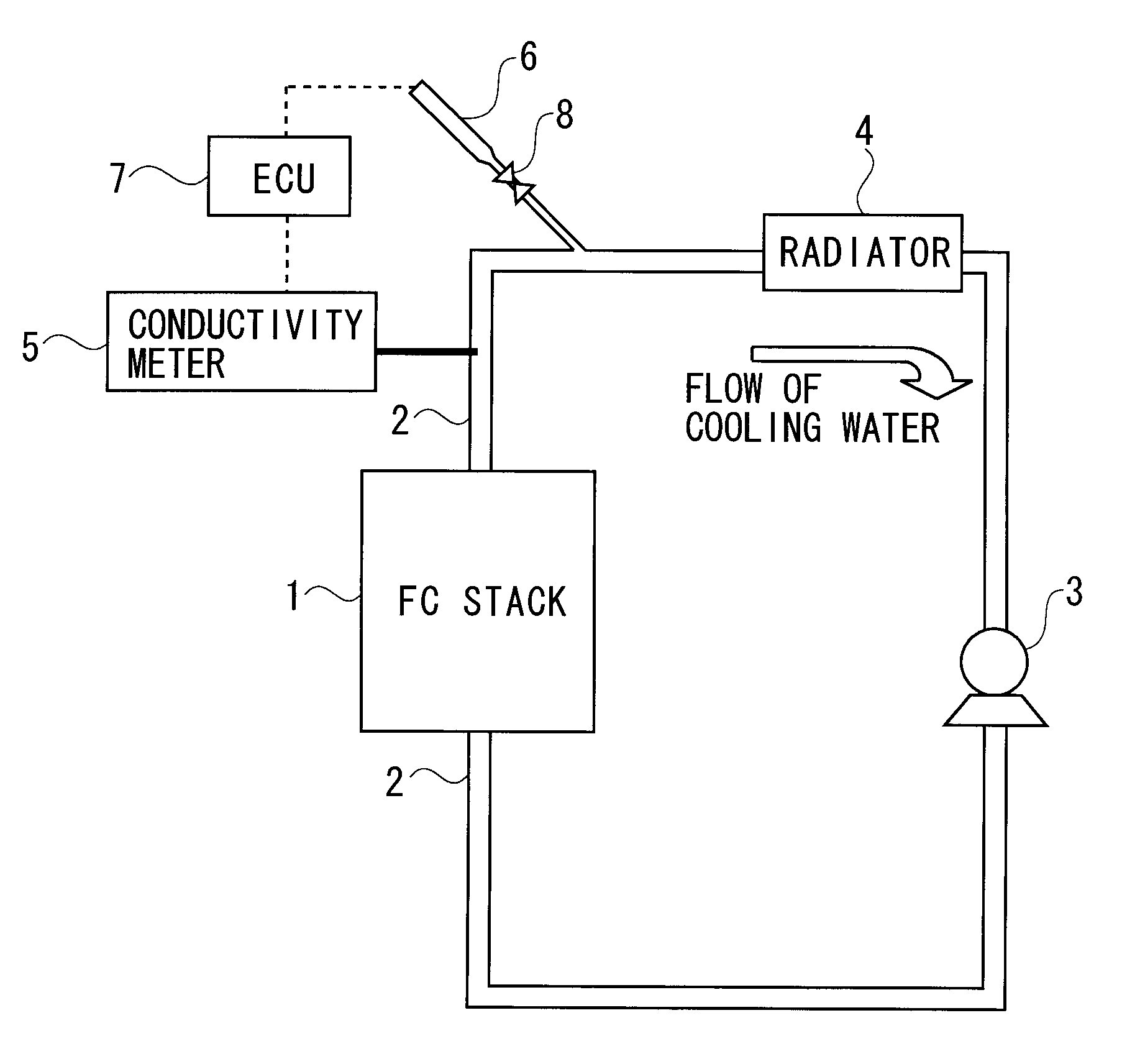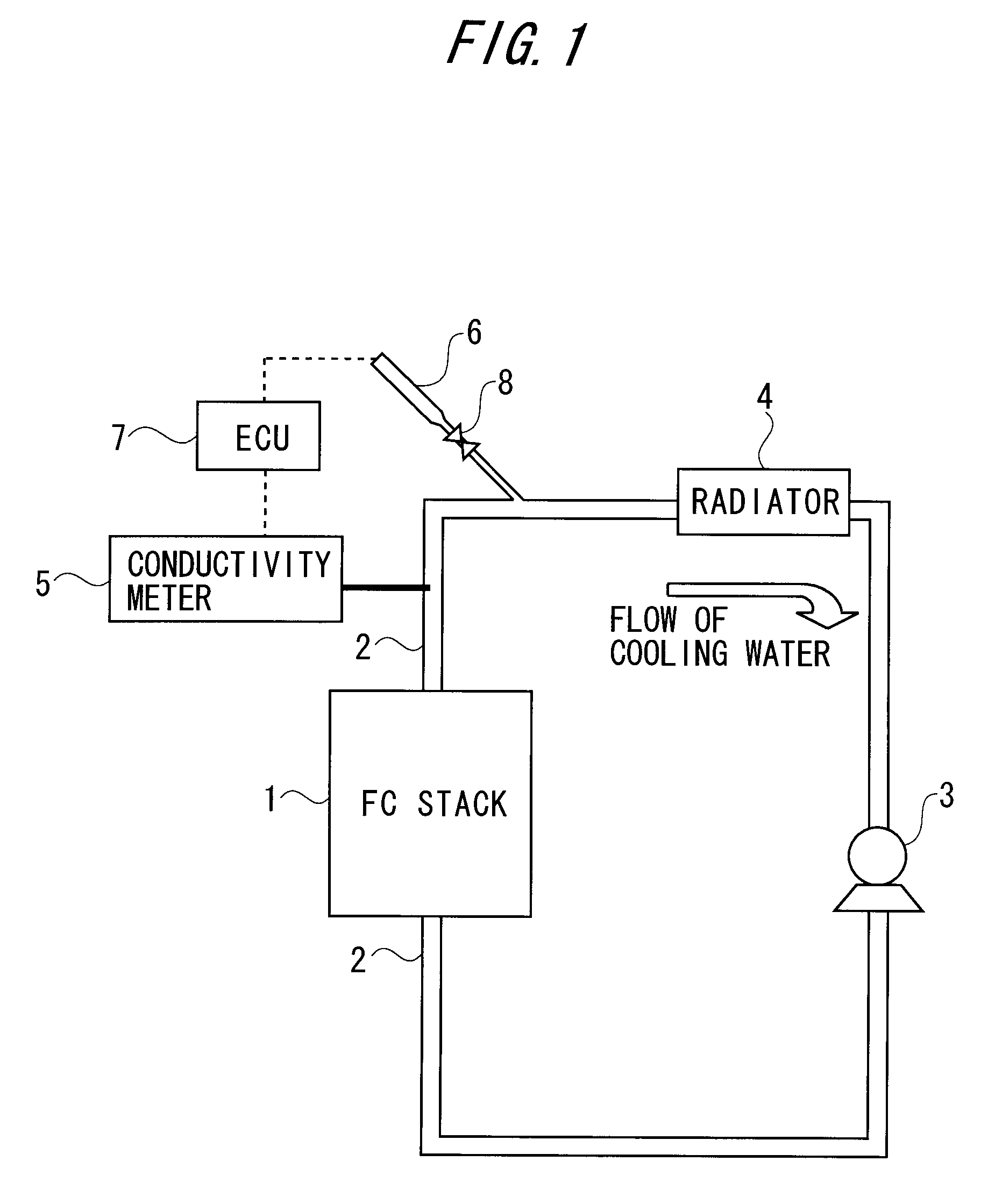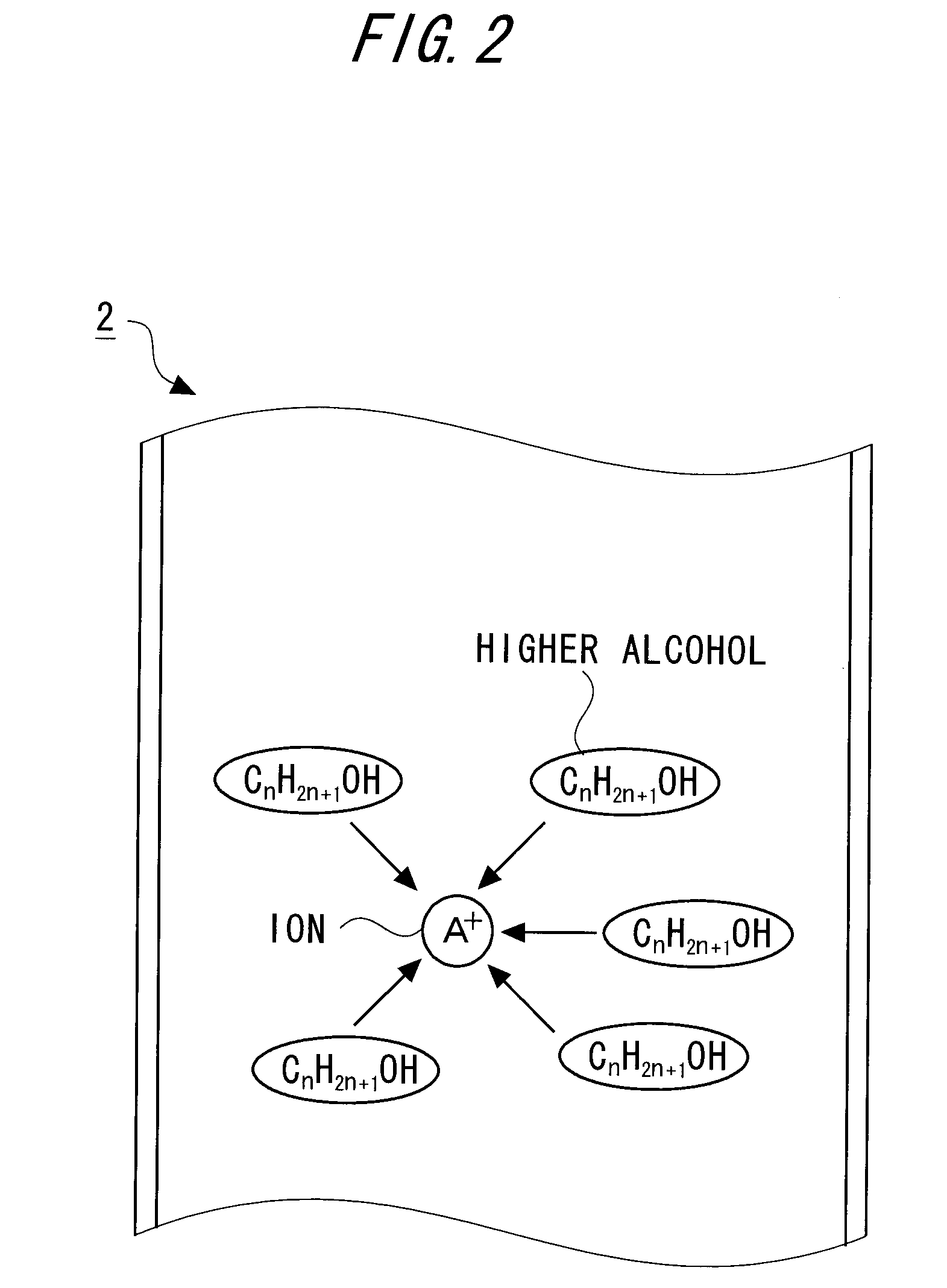Cooling apparatus for fuel cell
a fuel cell and cooling apparatus technology, applied in the direction of fuel cells, solid electrolyte fuel cells, cell components, etc., can solve the problems of high labor charge reduce and restrain the conductivity of the cooling medium
- Summary
- Abstract
- Description
- Claims
- Application Information
AI Technical Summary
Benefits of technology
Problems solved by technology
Method used
Image
Examples
first embodiment
[0022]A cooling system according to a first embodiment will hereinafter be described with reference to FIGS. 1 through 6. FIG. 1 is a diagram showing an example of a configuration of the cooling system of a fuel cell mounted on a mobile object such as mainly a fuel cell vehicle.
[0023]In FIG. 1, the cooling system according to the first embodiment includes a fuel cell stack 1, cooling system piping 2 via which cooling water circulates, a water pump 3 that circulates the cooling water, a radiator 4 that radiates heat of the cooling water into an outside air, a conductivity meter 5 for measuring a conductivity (an electrical conductivity) of the cooling water, a syringe 6 that injects a water solution into the cooling system piping 2, and an electronic control unit (ECU) 7 that is electrically connected to the conductivity meter 5 and to the syringe 6. In the first embodiment, the cooling water is circulated through the cooling system piping 2, however, in addition to the cooling water...
second embodiment
[0052]Next, the cooling system according to a second embodiment will be described. The same portions as those in the first embodiment discussed above are marked with the same numerals and symbols, and their detailed descriptions are omitted. In the cooling system according to the second embodiment, as illustrated in FIG. 7, the cooling system piping 2 is provided with a discharge pipe 20, and the discharge pipe 20 is provided with a discharge valve 21. The discharge pipe 20 is provided substantially in parallel with the angle of the gradient of the protruded portion 10. Then, the surface of the protruded portion 10 is connected to part of the inner wall surface of the discharge pipe 20. In FIG. 7, the discharge pipe 20 and the discharge valve 21 are provided on a one-by-one basis with respect to the protruded portion 10 and may also be provided on a plurality-by-plurality basis with respect to the protruded portion 10.
[0053]The electronic control unit 7 is electrically connected to ...
modified example
[0065]In the second embodiment, the large molecules residing on the protruded portion 10 provided on the inner wall surface of the cooling system piping 2 flow to the discharge pipe 20 and are discharged outside the cooling system piping 2. In the present modified example, an acid substance (e.g., acetic acid etc) is flowed to the cooling system piping 2, and the large molecules are hydrolyzed, whereby the large molecules residing on the protruded portion 10 provided on the inner wall surface of the cooling system piping 2 may be removed. In this case, the cooling system piping 2 is detached from the cooling system and may be washed with the acid substance.
PUM
| Property | Measurement | Unit |
|---|---|---|
| angle | aaaaa | aaaaa |
| conductivity measuring | aaaaa | aaaaa |
| conductivity | aaaaa | aaaaa |
Abstract
Description
Claims
Application Information
 Login to View More
Login to View More - R&D
- Intellectual Property
- Life Sciences
- Materials
- Tech Scout
- Unparalleled Data Quality
- Higher Quality Content
- 60% Fewer Hallucinations
Browse by: Latest US Patents, China's latest patents, Technical Efficacy Thesaurus, Application Domain, Technology Topic, Popular Technical Reports.
© 2025 PatSnap. All rights reserved.Legal|Privacy policy|Modern Slavery Act Transparency Statement|Sitemap|About US| Contact US: help@patsnap.com



